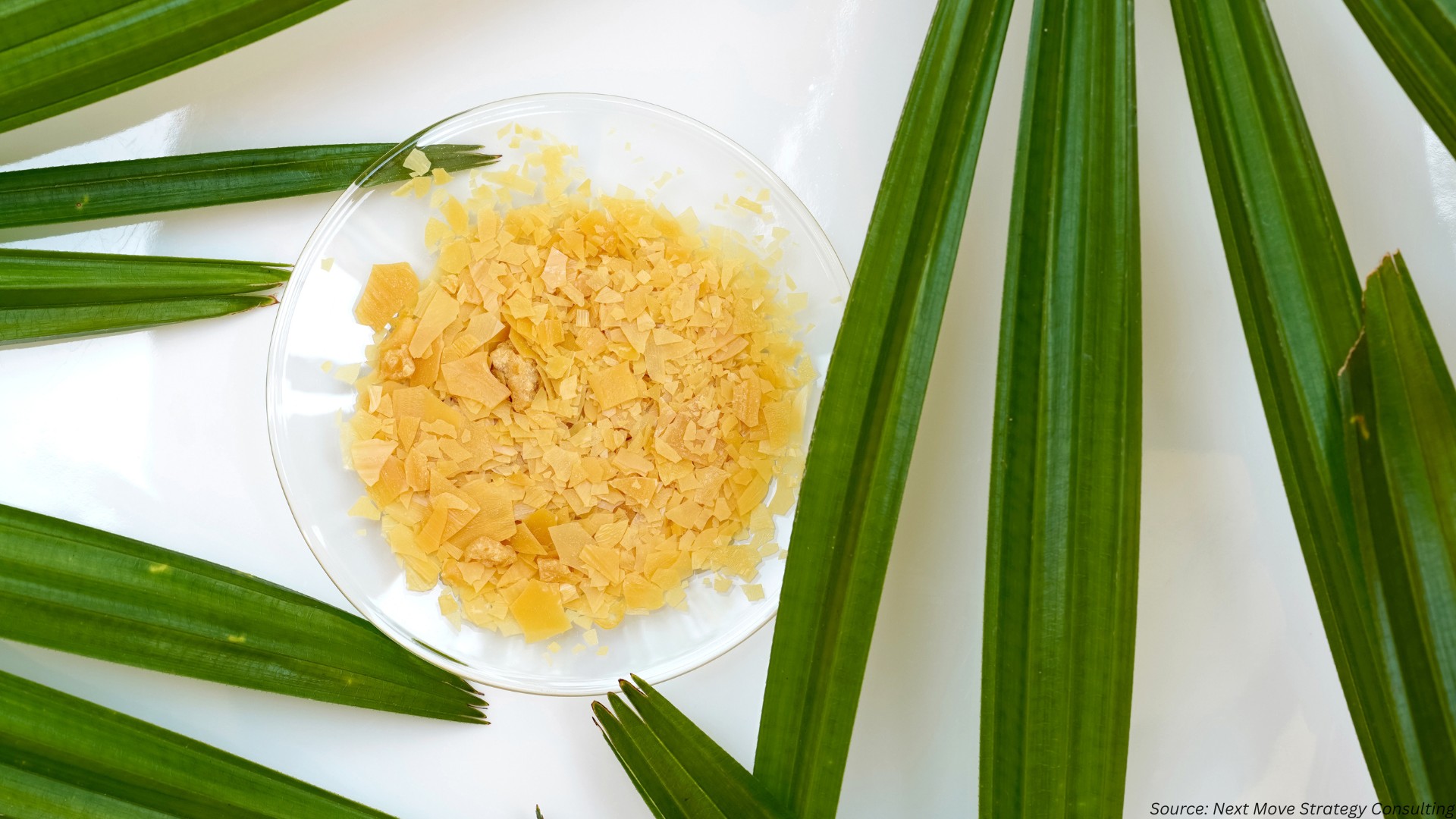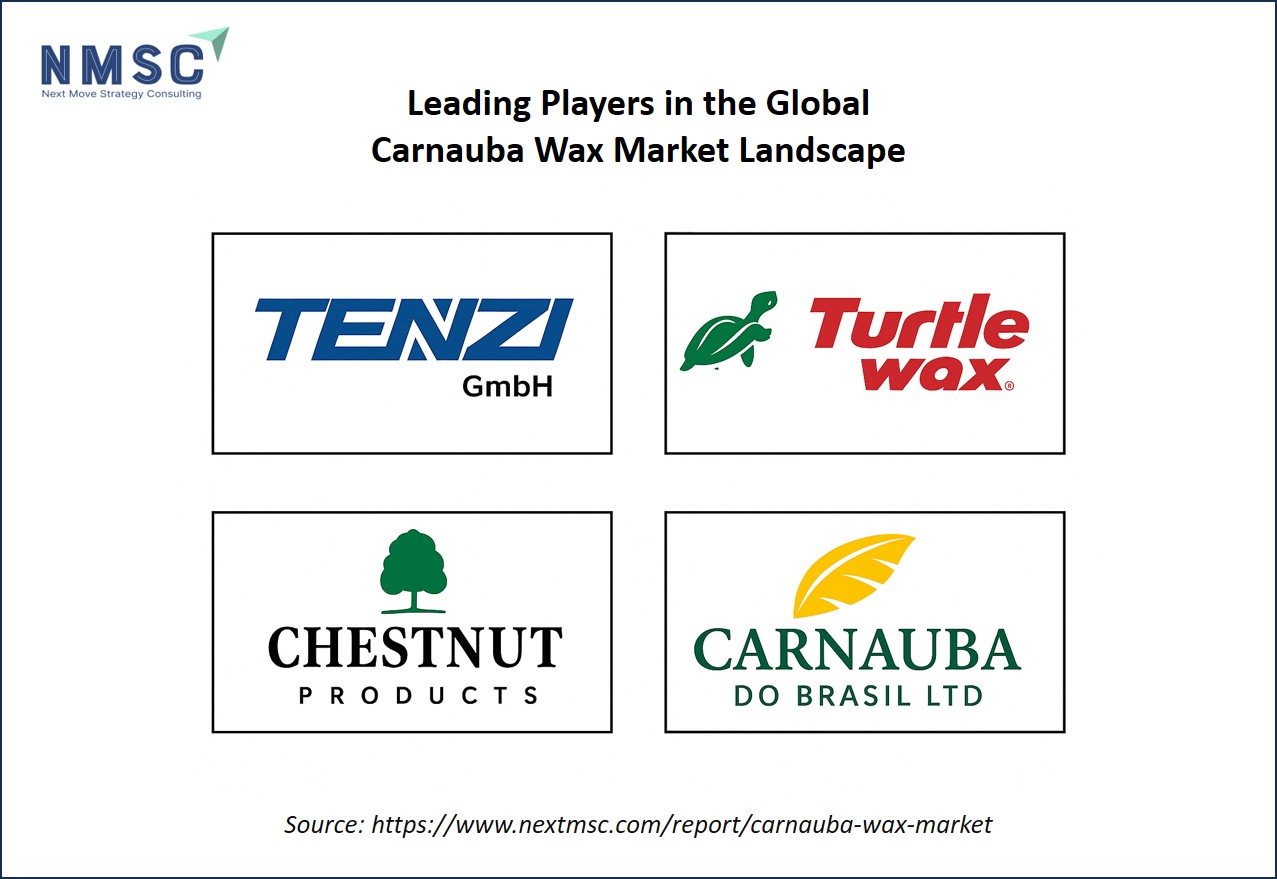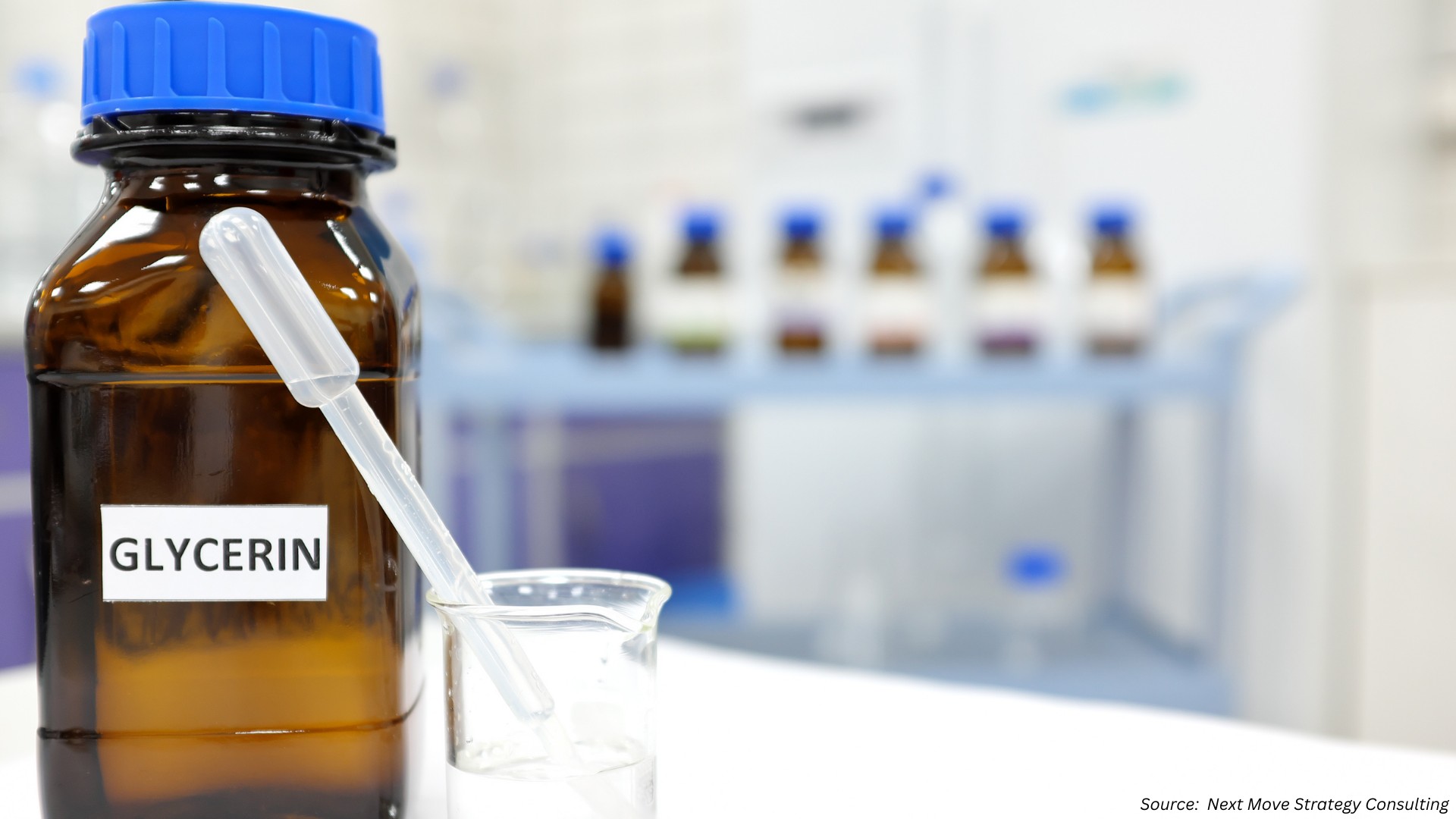Is Carnauba Wax Losing Its Shine? The 2025 Market Shift
Published: 2025-09-24

The global Carnauba Wax Market revenue is predicted to reach USD 392.3 million by 2030 with a CAGR of 3.88%. The sector, long valued for its renewable properties and versatile applications, is navigating a complex landscape in 2025. From supply chain volatility to innovative alternatives, this natural resource is at a crossroads.
This blog explores the current dynamics of the carnauba wax market, drawing insights from recent industry developments and research. Let us dive into what makes this market both challenging and promising.
What Drives the Demand for Carnauba Wax?
Carnauba wax, derived from the leaves of the carnauba palm in northeastern Brazil, is a prized ingredient across industries like printing inks, cosmetics, and food processing. Its high melting point, glossy finish, and natural origin make it a go-to choice for formulators. However, global demand is surging, putting pressure on its supply chain.
Key Applications Fueling Demand
-
Printing Inks: Carnauba wax provides excellent rub resistance and matting properties, ideal for premium packaging and glossy magazines.
-
Food Industry: Recent research highlights its use in 3D-printed bigels for codelivery of bioactive compounds, showcasing its potential in personalized nutrition.
-
Coatings and Cosmetics: Its durability and eco-friendly profile make it a staple in wood coatings and beauty products.
The versatility of carnauba wax drives its demand across multiple sectors, but its reliance on seasonal harvesting creates supply challenges. This growing need underscores the importance of finding reliable alternatives.
Why Is the Carnauba Wax Supply Chain So Volatile?
The carnauba wax supply chain is inherently unstable due to its dependence on natural and labor-intensive processes. Harvested primarily in northeastern Brazil, the wax faces several constraints that impact its availability and cost.
Factors Contributing to Supply Chain Volatility
-
Seasonal Harvesting: Carnauba wax production is limited to specific times of the year, making it vulnerable to disruptions.
-
Climate Dependencies: Droughts and unpredictable weather in Brazil affect palm yields, leading to inconsistent supply.
-
Labor-Intensive Collection: The manual harvesting process increases costs and limits scalability.
-
Rising Global Demand: Increased use in inks, food, and cosmetics amplifies price volatility.
The carnauba wax supply chain struggles with seasonal, climatic, and labor-related limitations, creating uncertainty for formulators. These challenges highlight the need for innovative solutions to stabilize production.
How Is Clariant Addressing Supply Chain Challenges?
Clariant, a leader in specialty chemicals, has introduced Ceridust 1310, a micronized rice bran wax blend, to mitigate the volatility of carnauba wax in printing ink applications. Launched on April 1, 2025, this product offers a reliable alternative without compromising performance.
Features of Ceridust 1310
-
High Melting Point: At 125°C, it matches carnauba wax’s durability Source 1.
-
Excellent Rub Resistance: Ensures quality in premium packaging and labels.
-
Superior Matting Properties: Ideal for glossy magazines and specialty labels.
-
Low Dosage Requirements: Effective at 0.2–1% for inks and up to 4% for wood coatings.
-
Controlled Manufacturing: Unlike carnauba wax, Ceridust 1310 is produced industrially, ensuring consistent quality.
Ray Gonzales, Clariant’s Head of Global Marketing Coatings & Adhesives, emphasizes, “Ceridust 1310 isn’t about replacing carnauba wax, it’s about giving our customers the flexibility they need to maintain consistent production despite market volatility” Source 1.
Clariant’s Ceridust 1310 addresses supply chain volatility by offering a high-performance, bio-based alternative to carnauba wax. Its consistent quality and versatility make it a game-changer for formulators.
What Role Does Carnauba Wax Play in 3D Printing Innovations?
Beyond traditional applications, carnauba wax is making waves in cutting-edge technologies like 3D printing. A study published on March 10, 2025, by ACS Food Science & Technology explores its use in bigel formulations for food applications, demonstrating its potential in personalized nutrition.
Key Findings from the Study
-
Bigel Composition: The research developed a bigel (BG3) with 40% carnauba wax-based oleogel and 60% ι-carrageenan hydrogel, optimized for 3D printing.
-
Printability: BG3 exhibited shear-thinning behavior, a flow behavior index of 0.13, and a recovery index of 0.32 (27.38% recovery), ensuring seamless extrusion and structural stability.
-
Applications: The bigel supports codelivery of bioactive flavors or colors, ideal for customized food products.
Optimal Printing Conditions:
-
Nozzle diameter: 0.60 mm
-
Printing speed: 1000 mm/min
-
Air pressure: 0.2–0.4 bar
-
Extrusion motor speed: 6–8 rpm
-
Infill: 25%
Carnauba wax’s role in 3D-printed bigels highlights its versatility in innovative applications. Its ability to support high-precision printing opens new possibilities in the food industry.
How Does Sustainability Shape the Carnauba Wax Market?
Sustainability is a growing priority for consumers and brands, influencing the carnauba wax market. While carnauba wax is renewable, its supply chain challenges raise questions about long-term viability. Innovations like Ceridust 1310 align with sustainability goals by reducing dependency on volatile natural resources.
Sustainability Trends
-
Bio-Based Alternatives: Ceridust 1310, a rice bran wax blend, supports eco-conscious formulations.
-
Consumer Demand: Brands are prioritizing sustainable ingredients to meet market expectations.
-
Reduced Environmental Impact: Controlled manufacturing of alternatives like Ceridust 1310 minimizes reliance on labor-intensive harvesting.
Sustainability is driving innovation in the carnauba wax market, with bio-based alternatives like Ceridust 1310 offering eco-friendly solutions that align with consumer and industry needs.
Who’s Shaping the Carnauba Wax Market?
The market features players like TENZI GmbH, Strahl & Pitsch, Aadra International, Arjun Beeswax, Eastto, Howard Products, Lush Retail, Turtle Wax, Kantilal Brothers, Chestnut Products, Foncepi Comercial Exportadora Ltd., Carnauba do Brasil Ltd., Kahl GmbH & Co KG, Norevo GmbH, Black Ox, and more. These companies drive growth through R&D, product and technology innovations, and strategic collaborations to enhance offerings and expand their global footprint.
What Are the Next Steps for Stakeholders in the Carnauba Wax Market?
The carnauba wax market is evolving, with opportunities for formulators, manufacturers, and researchers to adapt to its challenges. Here are actionable steps to navigate this dynamic landscape:
-
Explore Alternatives: Test products like Ceridust 1310 to reduce dependency on carnauba wax and ensure production stability.
-
Invest in R&D: Develop innovative applications, such as 3D-printed bigels, to expand carnauba wax’s use in high-value sectors.
-
Monitor Supply Trends: Stay informed about climate and labor conditions in Brazil to anticipate supply disruptions.
-
Engage with Industry Resources: Join webinars like Clariant’s Coatings and Adhesives hub to learn about new solutions.
-
Prioritize Sustainability: Adopt bio-based alternatives to meet consumer demand for eco-friendly products.
Stakeholders can thrive in the carnauba wax market by embracing innovation, monitoring supply trends, and prioritizing sustainability. These steps ensure resilience and competitiveness in a volatile market.
About the Author
 Sneha Chakraborty, a skilled SEO Executive and Content Writer with over 4 years in digital marketing, excels in boosting online visibility and engagement with data-driven strategies and compelling content. Passionate about simplifying digital ideas, she enjoys reading, sketching, and nature photography.
Sneha Chakraborty, a skilled SEO Executive and Content Writer with over 4 years in digital marketing, excels in boosting online visibility and engagement with data-driven strategies and compelling content. Passionate about simplifying digital ideas, she enjoys reading, sketching, and nature photography.
About the Reviewer
 Sanyukta Deb is a skilled Content Writer and Digital Marketing Team Leader, specializing in online visibility strategies and data-driven campaigns. She excels at creating audience-focused content that boosts brand presence and engagement, while also pursuing creative projects and design interests.
Sanyukta Deb is a skilled Content Writer and Digital Marketing Team Leader, specializing in online visibility strategies and data-driven campaigns. She excels at creating audience-focused content that boosts brand presence and engagement, while also pursuing creative projects and design interests.

















Add Comment